Psoriasis is presented as a non -infectious skin pathology of a chronic nature. Statistics say that 3. 7% of the world’s population is susceptible to this disease, called scaly lichen. Gender in this case is not important, psoriasis is not an infectious disease, while the risk group is represented by people aged 14-27 years. A spotted red exfoliation with white scales appears on the skin.
Localization is possible on any part of the body, but the most common places are the scalp, lower back, knees and elbows. Since the disease in question is chronic, it is indicated by a period of remission and exacerbation. How much pathology affects a patient’s life, and how to get rid of psoriasis forever?
Because of the appearance
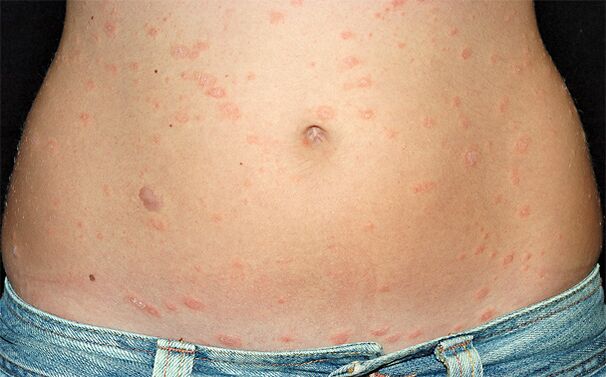
To understand what causes psoriasis, it should be noted that the process of pathological formation is systemic, both the skin and the whole human body are involved in it. The reason is not entirely clear, it can be viral, infectious, hereditary, neurogenic or mixed. Humoral and cellular immunity is activated, which contributes to the launch of autoimmune processes of cell damage, especially epidermal cells.
Metabolism is also disrupted, and overloaded offspring also exacerbate skin psoriasis. As a result, cell regeneration is accelerated by 3-5 times, which leads to the formation of psoriatic plaques. So, why does psoriasis occur, where quality of life is 80% dependent on proper treatment and timely detection of the disease:
- Bad offspring;
- Depression, constant stress;
- Dysbacteriosis;
- Problems with hormones;
- Allergic diseases;
- Candidiasis and streptoderma;
- Viral pathology;
- Addiction;
- Infections of a parasitic nature;
- Metabolic problems.
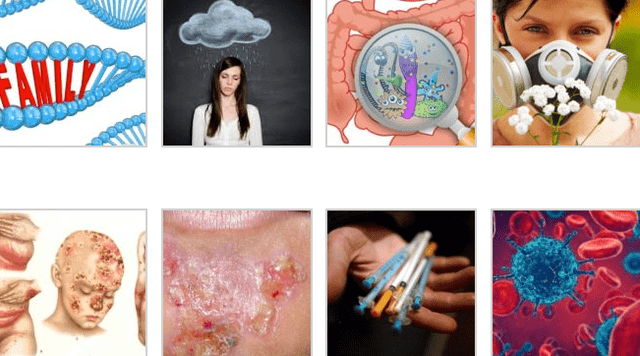
symptoms
The amount of rash at the onset of pathology can be considered insignificant. Studying the symptoms will allow you to know what psoriasis looks like on the body and how to recognize it. Psoriatic plaques play a role as a major symptom. This is a hyperemic area of skin with scales. With a healthy skin background, it looks noticeable and sublime. The presence of the following signs is a reason to immediately consult a dermatologist:
- Convex patches on the skin with light scales;
- Itching in problem areas;
- Excessive dryness and exfoliation of the skin;
- Painful cracks, blisters in the palms and soles of the feet;
- Defective and flaky nail plate.
Types of psoriasis
The classification of psoriasis involves the division of the disease into different types and forms. Need to consider the following types of psoriasis, taking into account the pathological localization and nature of the rash:
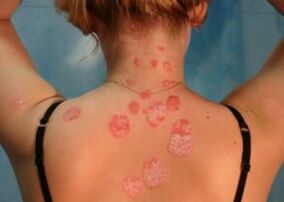
- Plaque psoriasis on the body is often referred to as abusive, common or simple. This is the most common variant, diagnosed in 85% of total patients. Areas of inflamed skin have a typical appearance for the disease in question - they easily peel, squeeze, with fever. The red skin under the scales is easily injured and can bleed. Over time, the plaques merge into what is called a paraffin lake.
- Inverted skin psoriasis affects the surface of the flexor. The inflamed area of skin has no exfoliation, and is barely prominent on healthy skin. Localization is represented by skin folds, that is, folds under the breast, if psoriasis in women, armpits, external genital area, inner surface of thighs and skin folds in groin. When sweat is removed, skin is injured or friction occurs, the condition of the inflamed area becomes worse. Diabetics and children are the most frequent patients.
- Pustular psoriasis of the skin is characterized by the most complex symptoms. Blisters with transparent uninfected exudates of an inflammatory nature increase over healthy areas of skin. Around the pustule thickened, inflamed, red skin with fever.
- Rupioid psoriasis in humans is characterized not only by a plaque -like rash, but also by acute inflammation of the epidermis. The surface of the skin under the plaque is bright pink and weeping.
- Guttate psoriasis in adults is characterized by a large number of small purple or red vesicles. The shape of the foam may resemble a circle, teardrop, dot or droplet. The affected area is often quite extensive, it can be psoriasis on the head, neck, shoulders, back, lower legs or thighs. Angina or streptococcal pharyngitis is often a provocateur of the development of the pathology in question.
Forms of psoriasis
As for the form of psoriasis, it can be psoriatic erythroderma, arthropathic psoriasis or psoriatic onychodystrophy:
- Psoriatic onychodystrophy, affecting the nails, leads to deformation of the nail plate on the lower or upper toes. It is possible to change the color of the nail itself or the nail bed. This type of psoriasis also leads to the formation of thickening, transverse lines, spots, dots, as well as increased fragility and delamination. Even complete loss of nails is possible.
- Erythrodermic psoriasis in men and women develops gradually and proceeds with complications. This is a consequence of neglected plaque psoriasis, when the epidermis becomes very red and swollen, characterized by a pronounced acute inflammatory process. Exfoliation and inflammation spread to a wide area, accompanied by pain, itching, and swelling of the subcutaneous tissue. With this form of pathology, fatal outcomes are more likely than others, as the body loses the ability to regulate body temperature due to inflammation, exfoliation and extensive detachment.
- Psoriatic arthritis, in addition to the main symptoms, is accompanied by inflammatory processes in the joints and connective tissues. This form of pathology can affect any joint, but often these are small upper and lower joints. If the disease spreads to the knee or hip joints, there is a high probability of losing the ability to move. The form of the disease under consideration accounts for 10-15% of all cases when psoriatic skin disease is diagnosed.
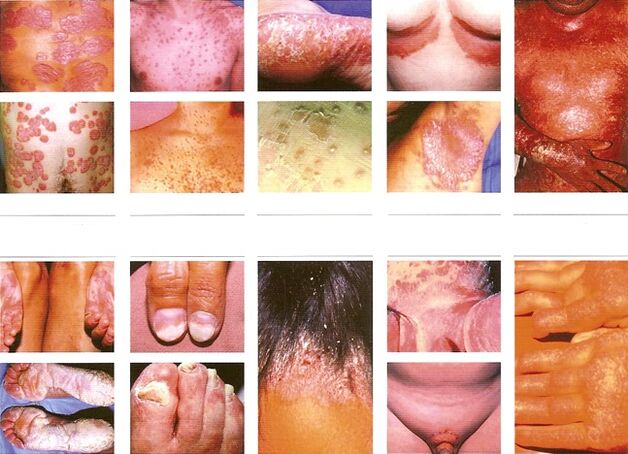
Developmental stage
How psoriasis develops is characterized by three consecutive stages. Every patient with the disease in question goes through them all, but with proper treatment, the duration of the second stage can be significantly reduced:
- The progressive stage is characterized by an increase in the first signs and a deterioration in general health;
- At the stationary stage, there is a peak in pathological development;
- The regression stage is represented by diminished symptoms and a significant improvement in overall health.
Diagnostics
Dermatovenereologists are involved in the diagnosis and further treatment of psoriasis skin diseases. There is usually no difficulty in determining the disease, as skin lesions are of a special nature. Rarely, there is a need for additional laboratory tests in the form of determining rheumatoid factors and a complete blood count. The participation of a rheumatologist becomes relevant if psoriatic arthritis is diagnosed. In such cases, it is necessary to make an x-ray of the joint. The suitability of skin biopsies is observed in extreme cases, when it is difficult to make a differential diagnosis.
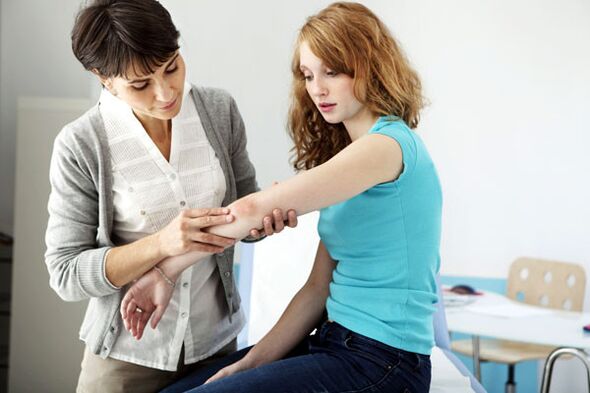
Quality of life
The incidence of psoriasis leads to a significant decrease in quality of life. Difficulties can arise during social adjustment and in the field of work due to physical and emotional discomfort. Severe itching and pain can complicate basic life processes: sleep, body care, walking, playing sports, doing professional duties, taking care of the house, pets.
On the part of patients, excessive concern for their own appearance is often shown, they fear negative reactions from others and have low self -esteem. Pain along with itching and emotional discomfort often leads to social isolation, anxiety disorders, social phobias and depressive states.
Treatment
Getting rid of psoriasis involves an integrated approach using the following drug and medication categories.
Creams and ointments
Ointments and creams allow you to fight psoriasis quite effectively with minimal side effects. These funds are usually applied directly to the inflamed area:
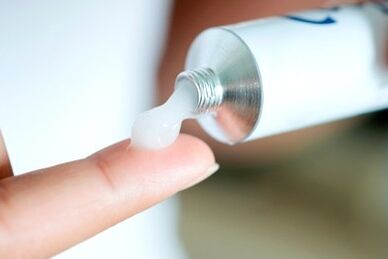
- Hormonal ointments are among the most effective, they eliminate the main symptoms and inhibit the proliferation of keratinocytes. The most powerful means in this category can irritate the skin, triggering dryness and thinning of the epidermis.
- Salicylic acid removes psoriatic flakes by cleansing the skin. Dosage when using this drug is very important, because excessive use leads to hair loss and skin irritation.
- Retinoids are the active form of vitamin A, they are almost as effective as hormonal ointments, but the clinical effect is achieved longer. Hypersensitivity to ultraviolet light is the most common adverse syndrome.
- Tar ointment reduces the severity of negative symptoms and inhibits the growth of skin cells. Side effects include alopecia, acne, or folliculitis.
- Ointment or gel form of vitamin D. Combined use with hormonal agents gives maximum effect.
- Moisturizing creams help eliminate negative side symptoms in the form of dryness and itching, but they are not acceptable as the main treatment method.
- Anthralin in the composition of the ointment helps to remove scales, inhibits the proliferation of keratinocytes. After application on the inflamed area, the product must be washed off after a while.
Tablets for psoriasis
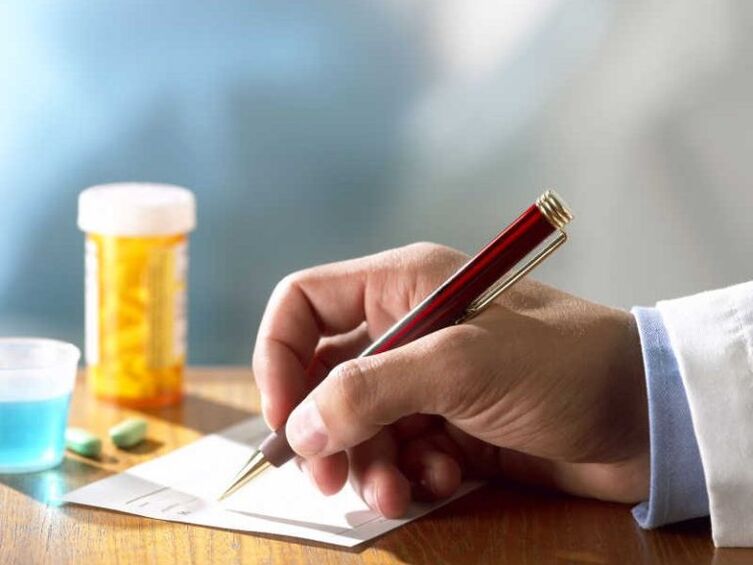
Since it is not always possible to beat psoriasis through local therapy, it becomes necessary to supplement treatment strategies with the tablet form of the drug. Side effects can increase significantly, so constant monitoring of your overall health through testing and visiting a doctor is a must:
- Systemic glucocorticosteroids reduce inflammatory processes, swelling and itching, inhibit the increased activity of skin cells. Side effects are very numerous, so tablets of the Anna group are rarely prescribed.
- Psoriasis all over the body can be treated with Methotrexate, which shows effective cytostatic and anti-inflammatory effects. The body responds quite positively to low doses. Rare side effects include increased fatigue, decreased appetite, and digestive problems.
- Retinoids are effective in cases where psoriasis is a skin disease that cannot be treated in any other way. Among the side effects are alopecia and inflammation of the lips. After using tablets of this group, you can not give birth for 3 years, because retinoids trigger the occurrence of birth defects.
- Cyclosporine has many similarities to methotrexate and belongs to the category of immunosuppressants. Increased blood pressure and the occurrence of renal pathology are the most common side effects.
- If the listed drugs cannot be used due to the characteristics of the patient’s body, it becomes expedient to prescribe hydroxyurea.
injection
Medicines that help get rid of psoriasis can be presented in the form of injections with the following components:
- Antihistamines immediately block acute itching;
- Glucocorticosteroids in the form of injections are used if tablets and ointments with these components are ineffective;
- Biological preparations are the result of the synthesis of human and animal proteins. They have a good effect on the body’s immune system, but the price is too high for most patients.
Shampoo application
It is also worth considering special therapeutic shampoos, because only they can remove psoriasis on the head:
- Antifungal shampoos are effective if the causative agent of pathological inflammation is a fungal infection;
- Shampoos containing corticosteroids;
- Shampoo or tar soap is used to get rid of psoriatic scales, as well as reduce burning and itching. It is also acceptable to add birch tar directly to the shampoo commonly used by patients.

Medications
If the appearance of psoriasis is diagnosed in time, many drugs can bring the right results, experts will recommend the most appropriate.

Biologically active substances
Since it is rarely possible to get rid of psoriasis quickly, dietary supplements should be taken as additional maintenance therapy:
- Vitamin D is useful, as calcium is one of the most important minerals in fighting the skin disease in question, and vitamin D is needed for its absorption. The use of this supplement at the stage of active phase transition to stationary phase is most effective.
- Silicone in the composition of vitamin-mineral complexes plays the role of sorbents that attract antigens, and also improve the condition of the skin.
- Lecithin is able to quickly restore epithelial cells, which die in this pathology. The integrity of the skin is restored more quickly, and the inflammatory process becomes less noticeable.
- Omega-3 acids and fish oil also contribute to the elimination of inflammatory processes.
People's approach to treatment
To increase the effectiveness of the drug, complex therapy can be supplemented with alternative treatment methods, but remember that psoriasis on the back and other areas may be sensitive to allergens, so you should first consult with your doctor:

- Chinese green tea helps reduce discomfort due to itchy skin, brightens plaque. Application can be done internally in the form of a drink or externally in the form of a mask on the affected area.
- Sunbathing can reduce the manifestations of psoriasis, especially in combination with seawater. Exposure to ultraviolet should not be direct, it is better to sunbathe in the shade. If you ignore this suggestion, the manifestations of psoriasis are eliminated only for a while, but soon the disease will return with more pronounced negative symptoms.
- Ointment from birch tar, salicylic alcohol and sea buckthorn oil should be applied directly to the affected area for 2 hours. If the psoriasis on the abdomen or back is widespread enough, it is worth putting gauze over the ointment. After washing the ointment, it is necessary to use celandine tincture in the form of oil.
- The infusion of flax seeds allows you to eliminate the clinical symptoms of the disease in question within a week. For a day, soak a tablespoon of seeds in a glass of boiling water, then boil, cool and strain, take in the morning before meals in combination with activated charcoal (1 tablet for every 10 kg of weight). This course should be continued for 20 days, even if the manifestations of psoriasis have disappeared. Products with caffeine in the composition should not be eaten.
- Propolis and butter in the form of an ointment in a ratio of 1: 20. Mix the ingredients, boil for 15 minutes, strain and apply on the affected area. The product must be stored in the refrigerator.
- Celery decoction can be taken orally once a day, and compresses can be used for 2 hours for 21 days. Three courses with a week's rest will be enough to forget about the disease for several years.
- Celandine powder and petroleum jelly in the form of ointments must be used for 3 days, applied to inflamed skin areas. After a 4 -day rest, the course continued until the external manifestations disappeared completely. To prepare the product, all components are mixed in equal proportions.
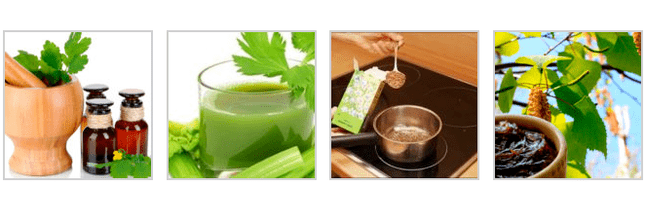
prevention
Psoriasis prevention, as well as measures to prevent worsening, are just as relevant as the treatment itself:
- Skin hygiene must be monitored very carefully, use moisturizing creams based on natural ingredients.
- Monitor your overall health, especially if you have immune problems. Taking a multivitamin complex is a mandatory component in the prevention of psoriasis.
- Frequent massage improves lymph outflow and blood circulation, as decomposition products are removed more quickly and the skin is cleansed better.
- Any contact with household chemicals must be limited to a maximum. Gloves and household respirators are mandatory protective equipment if it is not possible to transfer housework to other family members. When choosing household chemicals, pay attention to the presence of dyes, chemicals and fragrances. The level of the Christmas tree should be the same as the natural one. It is also worth minimizing the use of skin care cosmetics and decorative cosmetics.
- Often the first signs of the disease appear after nervous tension, so it is important to master various methods of relaxation and self-control. The benefits of healthy sleep cannot be ignored. With frequent stress, it is permissible to take tinctures and soothing teas of herbs.
- Smoking is a direct provocateur of both the deterioration and the disease itself in the beginning. We are talking about smokers who use more than 20 cigarettes a day. Under the influence of cigarette smoke, immunity is reduced, blood vessels are affected, and the body’s antioxidant defenses become weakened. As for alcohol, it does not affect the onset of this skin pathology, but it can exacerbate its course.

Psoriasis and pregnancy
Pregnancy greatly exacerbates the treatment of psoriasis, as remote use of all medications is allowed. It is also worth understanding in detail the issues of pregnancy planning and other situations related to this period in a woman's life.
Pregnancy planning
Female and male reproductive function is not affected by this disease. As for the possible danger to the baby, psoriasis is not transmitted through touch, so breastfeeding and communicating with the baby will not be a problem. Another thing is the ability of the disease to be transmitted at the genetic level, but the probability is not so great - 8-15% if one of the parents is ill. The risk increases if both parents are affected-50-60%.
When planning a pregnancy, you should first undergo another course of treatment to achieve remission. We are talking specifically about a woman, because the condition of the father does not affect the bearing of the fetus. Stress should also be minimized and treated responsibly in this aspect.

Pregnancy
As for the pregnancy itself, many note that the pathological course is greatly simplified, but the symptoms worsen after childbirth. This is due to the weakness of the female immune system, because the child, in fact, consumes the body, absorbing nutrients through the umbilical cord. If there is a need for treatment during pregnancy, it is advisable to give priority to safer means with minimal possibility of side effects. Analyze your condition, and you can understand how the disease will behave in future pregnancies. Next, it is advisable to consider which medications can be used and which should be avoided.
| Prohibited | Recommended | |
| Local treatment | Supplies based on vitamin A are categorically contraindicated. | Glucocorticosteroids in the composition of ointments and creams are acceptable in minimal quantities. In the shoulders, abdomen and in the area of the mammary glands, its use is not recommended, as cortisone can trigger the appearance of stretch marks. |
| Preparations based on vitamin D are allowed only in small quantities in certain problem areas. | Soothing and moisturizing cream has no contraindications. | |
| Systemic treatment | Methotrexate and acetitin trigger miscarriage or fetal malformations. Treatment with these drugs before childbirth requires abstinence for 4 months. also, such drugs have a negative effect on the condition of the male sperm, so the rules of compliance with this period also apply to the man. | UV-B phototherapy is harmless, either to the unborn child or to the mother. |
| Puva therapy during pregnancy is also not suitable, as it requires the use of photosensitizing agents first. | In case of severe illness, Cycloporine can be prescribed, which has no negative effects on the child's body, but can trigger side effects in the mother. |
Part C
The presence of psoriasis is not a reason to perform caesarean section during childbirth, but it is worth considering the possibility of the Koebner phenomenon. We are talking about the appearance of psoriasis in areas where the skin has been damaged. To date, no formal studies have been conducted on the healing rate of the area and the risk of infection.
Postpartum psoriasis
After childbirth, in most cases, there is a pathological exacerbation, the causes of which are stress, fatigue, chronic lack of sleep, irregular and limited diet, and hormonal imbalances. Breastfeeding is allowed, because the pathology is not transmitted to children with milk, however, when using the drug in a large area, lactation is not recommended, because some components can enter the milk.
No drug can guarantee 100% safety for mother and fetus, so consultation with the doctor leading the pregnancy is mandatory.
Despite the fact that psoriasis is chronic, with well -planned treatment, it is possible to successfully eliminate negative symptoms and avoid a decline in quality of life due to the many limitations associated with the disease.
























